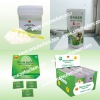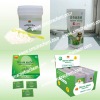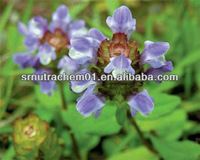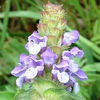- Plant Extract[10]
- Food Additives[4]
- Other Chemicals[4]
- Healthcare Supplement[2]
- Contact Person : Mr. Chen Devlin
- Company Name : Qingdao Sunrise Biotechnology Co., Ltd.
- Tel : 0086-532-82867587
- Fax : 0086-532-82675785
- Address : Shandong,Qingdao,No.6,Hongkong Middle Road
- Country/Region : China
- Zip : 266071
high quality ursolic acid
1.Pharmacological Action: Medicinal plants containing ursolic acid have been used in folk medicine before it was known which constituents were responsible for their therapeutic effectiveness. Contemporary scientific research which LED to the isolation and identification of ursolic acid revealed and confirmed that several pharmacological effects, such as, anti-tumor, hepatoprotective, anti-inflammatory (oral and topical), anti-ulcer, antimicrobial, anti-hyperlipidemic and antiviral, can be attributed to ursolic acid1.
However, its anti-inflammatory (topical), anti-tumor (skin cancer), and antimicrobial properties are pertinent to the cosmetic industry.
2. Anti-aging agent: Ursolic acid treatment improves the health of skin and hair. Ursolic acid and its derivatives form oil-resistant barriers on the skin and hair as they do in the waxy coating of fruits6. Ursolic acid has been used to treat photoaged skin because it prevents and improves the appearance of wrinkles and age spots by restoring the skin's collagen bundle structures and its elasticity31. Concentrations of ursolic acid ranging from 0.01 to 50 mg have been reported for inclusion in skin treatment preparations 32-33.
3. Hair growth stimulant: Ursolic acid and its isomer, oleanolic acid, have been used in to nics to enhance hair growth and prevent scalp irritation26, 27. Both triterpenoid compounds encourage hair growth by stimulating the peripheral blood flow in the scalp and activating the hair mother cells. They also furnish alopecia-preventing and dandruff-preventing effects27.
4. Antimicrobial activity: β Ursolic acid (triterpenoid sapogenin from the ursan group) inhibited the growth of several strains of staphylococci28. Numerous ursolic acid containing plants from the Lamiaceae family exhibited antibacterial/ fungal activity29. The minimal inhibitory concentration of Rosmarinus officinalis, Origanum majorana, and Lavandula officinalis were 500, 250, and 500 mg/cm3, respectively29. Ursolic acid also inhibited the growth of Microsporium lenosum and Candida albicans at 250 mg/mL30.
high quality ursolic acid










